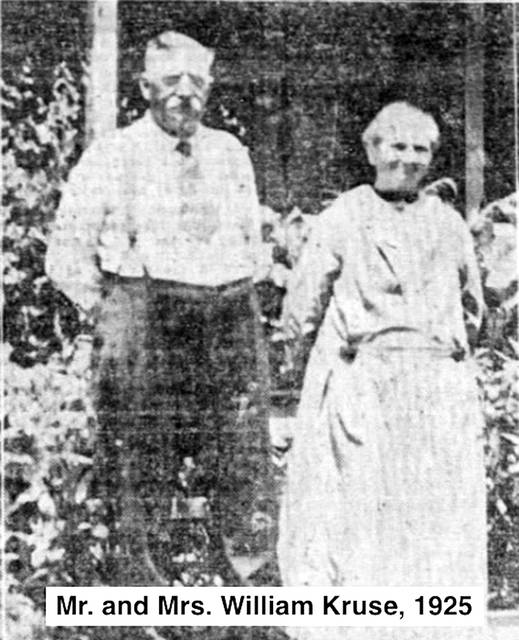In May 1883, German immigrants Mr. William Kruse (1856-1936) and Mrs. Louisa Kruse (1857-1925), with their three children, debarked from the steamer Ehrenfel at Koloa Landing with a number of other German immigrant families following a five-month voyage from Germany.
At the landing they were met by bullock carts that transported them to camp houses within Koloa Sugar Co., where the men among them would soon begin work as contract sugar laborers.
The Kruses went to Kaluahonu Valley, about two miles north of the Koloa mill, to embark upon a new life far from the suffering they had endured when the Wiser River had flooded in Germany — the catastrophe that had prompted them to leave for Hawaii.
After working four years at Koloa Sugar Co., Mr. Kruse moved to Grove Farm with his family to operate that company’s Fowler self-moving steam plow, manufactured by John Fowler &Co. of Leeds, England, and first introduced into Hawaii in 1881.
Prior to that year, the plowing of sugar cane fields in Hawaii had been accomplished by men driving teams of oxen, mules or horses pulling plows across cane fields.
Then in 1890, Kruse joined August Dreier’s Eleele Plantation, a predecessor company of McBryde Sugar Co., also as a steam plow operator.
Afterwards, at McBryde, he supervised all of its steam plows until his retirement many years later.
Kruse reminisced that while he worked at Koloa Sugar Co. he observed that all travel was done on horse or mule-back and there was not a single buggy to be seen until Ernest Cropp of Koloa Sugar Co. bought the first buggy pulled by a couple of fast horses.
He also recalled that the Hawaiian language was commonly spoken, which he learned along with English, and he was proud to say that he’d been a citizen of four nations: Germany, Hawaii under Kalakaua and Liliuokalani, the Republic of Hawaii and the United States.
Mr. and Mrs. Kruse had nine children: August, William, Henry, Louis, George, John, Mrs. Dora Mckeckney, Mrs. George Gardner and Mrs. Herman Busch.



1898 time? Interesting statistics on the plantations of Kaua’i. All Europeans. The USA was just the owner of a territory. Japanese, Koreans, Hawaiians, Filopinos, Portuguese, made up the workers on the plantations. The laborers were many. I think it was just about this time that Daniel Inouye was just about born. I don’t know if you remember or know, but Daniel Inouye is the name of Honolulu’s Airport, renamed. As you can see Daniel Inouye was a military man, then he became a politician. Just for thought; some feel he deserved the name and to be on an airport is a great honor. All after he died. I just think it became racist in Washington D.C. so they named the Honolulu Airport after him.
You must not know a lot about Hawaiian history. FYI. It is spelled Filipinos.
Your sentence structure makes it difficult to understand what you mean. Especially your racist comment.
Nevertheless, the Hawaii state legislature passed a resolution requesting the Department of Transportation to rename Honolulu International Airport after him. The reason Daniel Inouye was given this honor was because of who he was and what he did for Hawaii and this country. He was a Medal of Honor recipient from World War II. He lost his right arm fighting for our country. He represented Hawaii in Congress for 53 years. He was the first Japanese American to serve in the U.S. House of Representatives and later the first in the U.S. Senate. Finally, he was President pro tempore of the Senate, making him third in the presidential line of succession after the Vice President and the Speaker of the House of Representatives